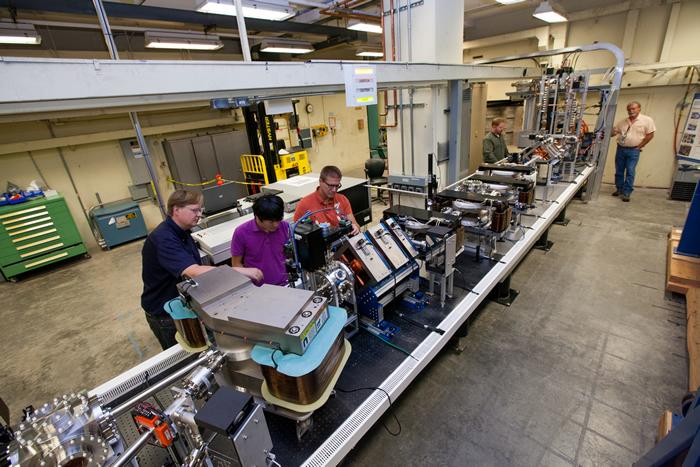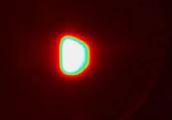Over the past decade LLNL has both invented the concepts for and led the world in the development of laser-based, mono-energetic gamma-ray (MEGa-ray) sources. These sources, which combine high-energy, high-average-power lasers and compact, high-gradient, RF-accelerator technology promise to revolutionize both nuclear physics and to enable a wide range of unique, isotope-specific material detection, assay and imaging applications.
The selected industrial partner and LLNL will enter into a Cooperative Research and Development Agreement (CRADA) to develop the next generation of laser technologies for MEGa-ray systems and to create a next generation of MEGa-ray sources that could be marketed to both the industrial and academic communities.
The MEGa-ray system developed will be based on LLNL's proprietary, multi-GHz Compton scattering interaction geometry, calorimetric gamma-ray detectors, multi-GHz, photo-gun drive laser technology and kW-average-power, diode-pumped pulsed laser technology. The resulting integrated MEGa-ray source will be unique in the world and will target emerging business and science opportunities both in the U.S. and Europe. The successful execution of this CRADA will enable the U.S. to establish industrial leadership in several key laser, accelerator and gamma-ray technology areas. It is anticipated that the activity will also increase U.S. competitiveness internationally in the areas of compact accelerator technology.
At the conclusion of the CRADA project, the industrial partner will have the right to license from LLNL any associated pre-existing MEGa-ray-related intellectual property as well as any MEGa-ray-related laser, gamma-ray, accelerator and detector intellectual property generated during the course of the CRADA activity.
The technology research and development associated with this machine will provide the basis for developing production machines for facilities and the basis for development of mobile or re-locatable machines that could be deployed for field exploration. At the conclusion of this CRADA, the LLNL MEGa-ray capability will be ready for initial assay and material detection studies.
Domestic production of Rare Earth Elements is critical to many existing and emerging U.S. industries and to the development of clean energy technologies. This CRADA will provide new tools that will enhance the U.S. ability to domestically produce the materials needed for these U.S. industries and domestic industrial applications. Furthermore, successful execution of this CRADA will provide the necessary capability to develop follow-on nuclear applications of MEGa-ray technology and may lead to new methods for prevention of nuclear terrorism and safeguards of nuclear materials.
LLNL's proprietary MEGa-ray system is described in the following intellectual property:
U.S. Patent 7,564,241.
U.S. Patent 8,068,522.
U.S. Patent 8,369,480.
U.S. Patent 8,934,608



